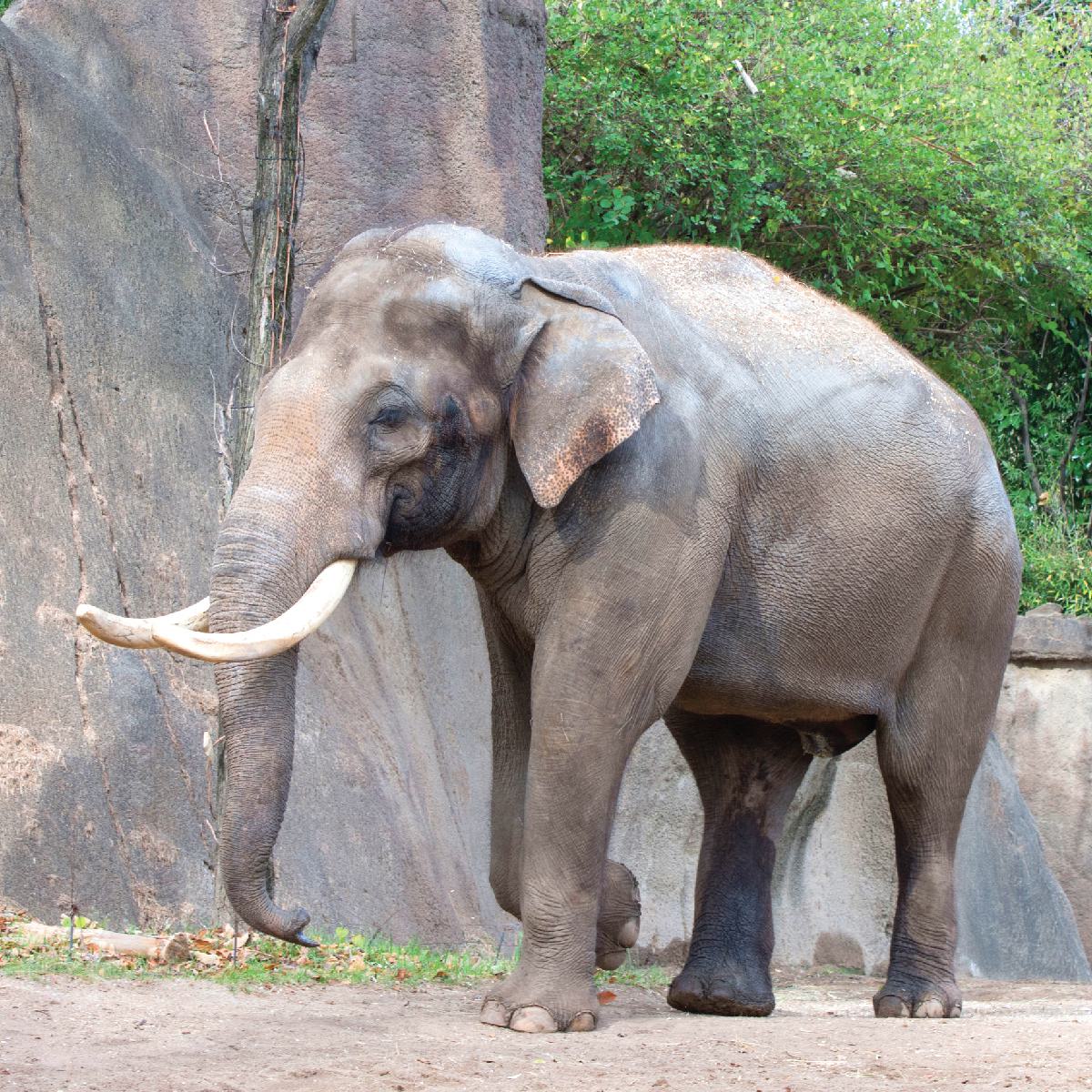
Asian Elephant
Elephas maximus
Did you know?
- Asian elephants have an amazing ability to find underground water. By digging water holes in dry seasons, they help provide water for other animals.
- These big herbivores spread the seeds of fruit trees by depositing them in their dung (poo) during their travels.
- Elephants are social creatures. “Aunties” pitch in to help care for youngsters in the all-female herd.
- The matriarch is usually the oldest and most experienced female in the herd. She coordinates the elephants' movements in search of food and water.
- An elephant pregnancy lasts nearly 22 months. Babies weigh 250 to 350 pounds at birth.
Living Large
Elephants are the largest living animals on land. They have the biggest brains in the animal kingdom and form close, long-lasting social bonds. Even though Asian elephants are smaller than their African cousins, they still get to be 7 to 12 feet tall and weigh between 6,600 and 11,000 pounds.
Facial Features
Two well-known elephant adaptations are their trunks and tusks. The trunk is essentially their upper lip and nose extended to the ground. It is used for feeding and a host of other behaviors, like drinking, greeting and swimming. The well-known tusks are actually two enlarged upper teeth that grow throughout their lives.
Threat Level
- Unknown
- Common
- Near Threatened
- Threatened
- Endangered
- Critically Endangered
- Extinct in the Wild
Endangered
The Asian elephant faces a very high risk of extinction in the wild.
Range
India, Sri Lanka, Southeast Asia
Habitat
Scrub forests, adjoining grasslands, jungles where remaining

We care about elephants
There are nearly 50,000 Asian elephants left in the wild, and they are facing extinction due to habitat loss and destruction.
The Saint Louis Zoo is committed to conserving this endangered species. The Saint Louis Zoo WildCare Institute Center for Asian Elephant Conservation supports the welfare and conservation of Asian elephants in Sumatra and other countries in Asia, India and Myanmar. The WildCare Institute Center for Conservation in the Horn of Africa also supports conservation of African elephants in Kenya through the Northern Rangelands Trust. Additionally, the Zoo participates in the Asian Elephant Species Survival Plan, a cooperative breeding program that helps ensure a healthy population of animals.
Learn more about how we are helping wildlife around the world.
Find this animal in River's Edge

SAINT LOUIS ZOO ZONE
River's Edge
Take a journey along a mythical waterway through four continents to discover how wildlife, plants and people interact. River's Edge is the Saint Louis Zoo's first immersion exhibit—a lushly planted naturalistic environment showcasing multiple species from around the world.

